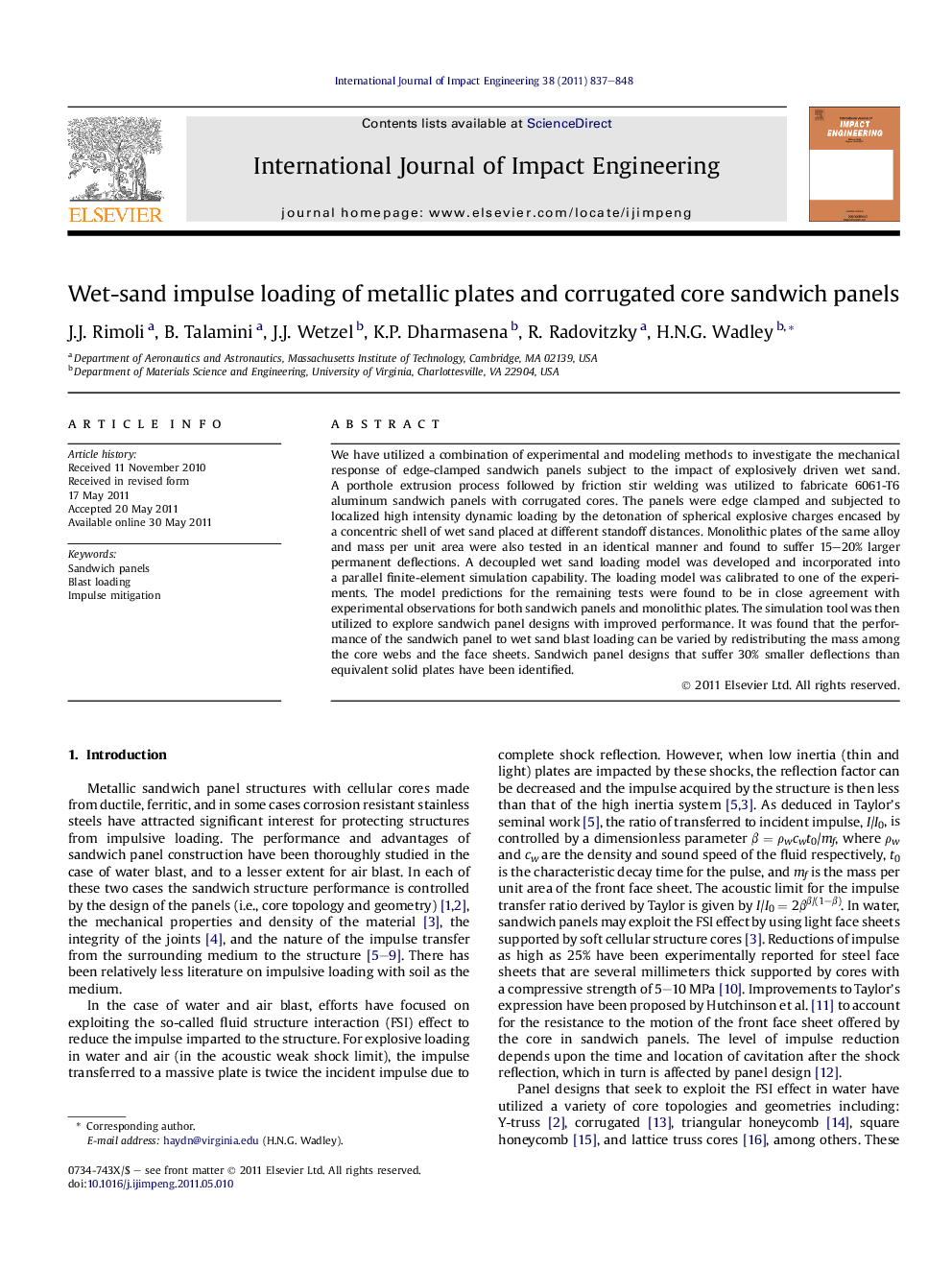| Article ID | Journal | Published Year | Pages | File Type |
|---|---|---|---|---|
| 779556 | International Journal of Impact Engineering | 2011 | 12 Pages |
We have utilized a combination of experimental and modeling methods to investigate the mechanical response of edge-clamped sandwich panels subject to the impact of explosively driven wet sand. A porthole extrusion process followed by friction stir welding was utilized to fabricate 6061-T6 aluminum sandwich panels with corrugated cores. The panels were edge clamped and subjected to localized high intensity dynamic loading by the detonation of spherical explosive charges encased by a concentric shell of wet sand placed at different standoff distances. Monolithic plates of the same alloy and mass per unit area were also tested in an identical manner and found to suffer 15–20% larger permanent deflections. A decoupled wet sand loading model was developed and incorporated into a parallel finite-element simulation capability. The loading model was calibrated to one of the experiments. The model predictions for the remaining tests were found to be in close agreement with experimental observations for both sandwich panels and monolithic plates. The simulation tool was then utilized to explore sandwich panel designs with improved performance. It was found that the performance of the sandwich panel to wet sand blast loading can be varied by redistributing the mass among the core webs and the face sheets. Sandwich panel designs that suffer 30% smaller deflections than equivalent solid plates have been identified.
